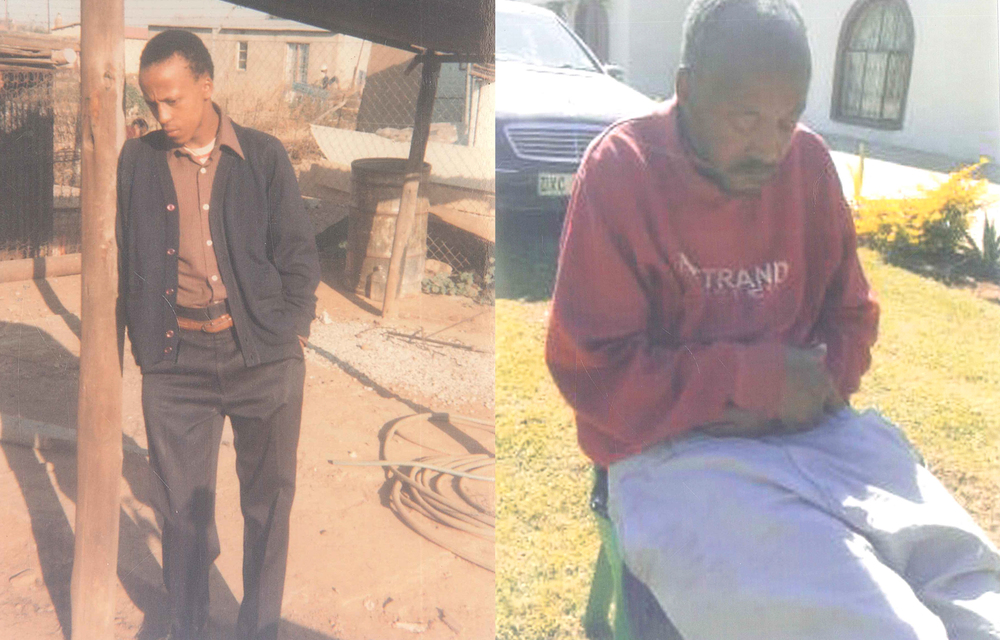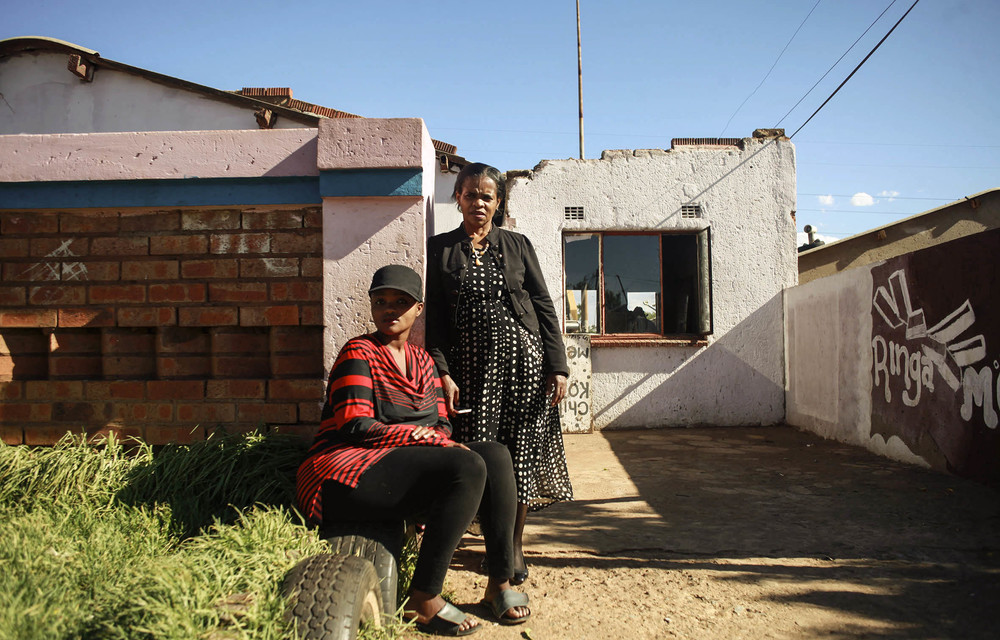- The Life Esidimeni tragedy should have spurred urgent action to make mental health care in South Africa more humane, instead it seems to have frozen any attempts to do so, writes Leon de Beer, the deputy director at the South African Federation for Mental Health.
- The disastrous move of more than 1 000 mental health patients out of hospital settings and into unlicensed nonprofits (which left 144 people dead and another 44 missing) was the worst case scenario for deinstitutionalisation, but it’s still a proven way to treat mental illness while maintaining people’s dignity.
- The country’s budget doesn’t line up with plans to deinstitutionalise, since the bulk of South Africa’s mental healthcare budget is still spent on hospital care.
COMMENT
Helen Adams, not her real name, woke up alone in a room of a state psychiatric hospital in Gauteng, confused.
She had no idea how she got there.
It soon became clear that she’d been admitted to the facility to get treatment for her mental illness.
Later, Adams, 68, found herself in a lounge, which had no furniture. There, she would sit on the cold floor for hours, wearing a tattered tracksuit that the hospital had given her. At suppertime, she ate the bland supper she was served, took the medication she was given and went to bed.
That was day one of 90.
“It was like a jail sentence,” she said during an interview for my master’s degree, which investigates how people living in community-based mental health facilities view their right to dignity.
Adams would have many more episodes of psychiatric distress like the one that got her admitted, but thankfully she wouldn’t be admitted to that particular hospital again.
When I spoke to her in 2020, she was living at a community-based mental health facility, run by a nonprofit, in Johannesburg, where she felt much more comfortable.
Adams says she couldn’t bear the thought of being institutionalised again. “I took a knock. My pride and my dignity went for a loop. If you saw this place you’d agree with me that it’s not fit for anybody to go there.”
Fight, flight or freeze: why is mental healthcare in SA in limbo?
Adams’s problem brings into question an issue that has been around for decades but that is not yet being addressed effectively — it’s called deinstitutionalisation.
It means this: the steady, yet well-managed moving of persons with mental illness from institutional settings to community-based mental healthcare. So, instead of being kept unnecessarily long in a psychiatric hospital (where people sometimes are overly medicated, physically restrained, sedated against their will or even abused), they are moved to well-equipped and resourced community-based mental health services once they’re stable and ready to start their journey to reintegrate into society.
Reports show this is a more effective method of managing their conditions.
The move to community-based mental healthcare is what government officials involved in the Life Esidimeni tragedy in 2015 claimed to have done, but which had gone horribly wrong because of corruption and political interference and a badly planned rush to save money. The result was a national tragedy that claimed 144 lives — another 44 people have never been found.
A virtual inquest is currently underway in the North Gauteng High Court to determine whether government officials can be held criminally liable for those deaths.
The Gauteng health department’s order that more than 1 000 mental health patients be moved from Life Esidimeni facilities (that had the contract to care for state patients) to nonprofit providers of community-based mental healthcare services, contravened one of the basic principles of good deinstitutionalisation — namely, that community-based mental healthcare systems must be properly developed before people are discharged from hospital settings.
This was not the case in Gauteng and led to people dying at facilities that former deputy chief justice Dikgang Moseneke described as “places of torture”. Nearly five years after arbitration proceedings ended, the Life Esidimeni disaster seems to have frozen any attempts to make mental healthcare more humane, instead of spurring urgent action.
What is community-based mental healthcare?
The idea of community-based care for people with mental illness has, unfortunately, become tangled up with the Life Esidimeni tragedy’s heart-wrenching stories of neglect and abuse in South Africa.
The people who were moved from Life Esidimeni were never evaluated to see if the new nonprofit organisations would be the right place for them, nor did the new centres get support to help them prepare or adjust so that they could take in new residents who, in many cases, still required clinical care.
So what does real community-based mental healthcare look like?
In South Africa, its main focus is to empower people through projects that help them to handle the challenges of daily life on their own and assist them with finding jobs. That could, for instance, include programmes that help them to adhere to prescribed medicine, encourage them to exercise regularly and eat healthy food, and help them to become part of groups that assist them to reintegrate into society.
These projects could be run at day centres or at facilities where people live full-time, but it has to be set up in a way that allows people to feel included in their communities.
At community-based mental health services, people still take their medicine, but the facilities don’t employ doctors and nurses (like psychiatric hospitals do) to provide intensive, 24-hour medical care. So, psychiatric clinics and hospitals still form a vital part of the mental health system, as long as the facility’s treatment policies put patients’ rights first. That rules out people being isolated, forced to take medicines, staying in an institution against their will or preventing them from settling back into society, according to the World Health Organisation’s (WHO) 2021 policy guidelines.
Plans, but little progress
In June, the national health department published new draft rules that set out how such community-based organisations should operate and what the terms for licensing would be, but at the South African Federation for Mental Health (SAFMH), we believe this document doesn’t do enough to apply the lessons we learned from the Life Esidimeni tragedy.
For one, it must be amended to remove any mention of clinical services linked to community-based facilities — the SAFMH said as much in our submission to the draft regulations, which will be published once the national health department has had a chance to review it.
Meanwhile, the country’s finances don’t line up with its plan to deinstitutionalise.
The bulk of South Africa’s mental health budget (86%) is still spent on hospital care, according to a 2019 study published in Health Policy and Planning. The country’s action plan for mental health lapsed two years ago and a new strategy has not yet been released.
Moreover, most of South Africa’s 2 500 registered counsellors, whose role was specifically created to make community mental health support more accessible, are struggling to find jobs in the public sector.
The Gauteng Mental Health Marathon Project, the ill-fated plan that moved patients out of Life Esidimeni, is an example of a worst-case scenario of deinstitutionalisation, and an illustration of how important it is that community-based mental healthcare infrastructure is developed properly before people are transferred from hospital settings.
Deinstitutionalisation — when it’s done right — is still the proven way to treat people with mental illness while protecting their dignity.
And there are projects that work.
Sanctuaries, not asylums
People I interviewed for my research described their experience at a community-based centre in Johannesburg as “a sanctuary”. Here, they say, they made friends with others and came to feel accepted, which improved their self-worth.
“I’ve always been a drifter,” one participant said. “But when I came to this facility, I felt like I was at home.”
Feeling that you’re part of a group — called having a sense of belonging — is important for everyone, but even more so for those who can easily feel excluded from society, such as people with mental illness.
In a United States study, people diagnosed with schizophrenia (a serious mental disorder that affects a person’s ability to think, feel and behave clearly) said that being treated at a facility (albeit a hospital) where they had contact with other people who also lived with mental illnesses increased their sense of belonging. This, in turn, gave them hope, which is typically described as believing that your situation can change for the better. Research shows that having hope helps people with mental health disorders cope better and recover easier. In this way, brief hospital-based care can complement community mental health services, but it shouldn’t be the only option — which is how treating psychiatric illnesses has often been approached in the past.
“I’ll be close to my friends”
In Brazil, dedicated psychiatric hospitals no longer exist.
Instead, people get help for mental health problems through a network of community-based services. Primary health clinics and the Centres for Psychosocial Care (often called Caps instead of the full Portuguese name, Centros de Atenção Psicossocial) are the main port of call and coordinate the service, but they also call on external specialists, outreach programmes and, in some cases, local general hospitals to help. (An example would be if someone needs to be admitted for a short while during an emergency.)
The Caps centres are designed to make residents feel as if they’re at home. They have a dining area where people eat together, individual counselling rooms, a pharmacy and communal areas, which encourage group activities such as going for walks together. Folks also have outings to public spaces, such as parks and museums.
One client told the WHO: “Caps is a place where we have affection, medicine, food and support. If I happen to be [admitted to a psychiatric hospital], they will know and they will bring me here, close to my friends.”
This person said that people “recover faster [at Caps] because they are treated with humanity”. And research backs this up.
In a study of more than 1 800 people who used the Caps network, almost a quarter said they did not experience another mental health crisis. For six out of 10 people emergencies happened less often and seven out of 10 reported that these events were less intense.
The system also lets a person with mental illness feel more in control of their treatment because they can make their own decisions, don’t have to wait for a crisis to get help and they view themselves as taking part in their recovery rather than receiving treatment passively. The support of a team of healthcare workers trained to deal with less complex psychological problems takes some burden off the primary centres and seems to work especially well in rural areas, according to an evaluation by the WHO. (The idea is similar to that of South Africa’s registered counsellors programme.)
It’s not about passing the buck (or saving a few)
Community-based mental healthcare doesn’t mean shipping someone off to a centre within their community and then forgetting about them.
Some people I spoke to, though, mentioned that that’s exactly how they felt.
Said one 57-year-old woman: “[Your family] dumps you and they forget you are here [at the centre]. You don’t know where you’re going. Better hospitalised than sitting in a place like this.”
For effective community-based care, a facility should therefore have a system in place that encourages family involvement and also a clear plan to help the person return to society through, for instance, skills or job programmes.
This has to be done with a good understanding of a person’s individual circumstances and what care they need as part of their recovery, research shows.
But although helping people with mental health conditions settle back into a community after facility-based treatment can improve their quality of life, some may feel that their lives would have been better if they stayed at the care centre.
Researchers say it could be because a person recovering from mental illness feels that the community they interact with outside the centre are different from them, while their interactions at the facility are mostly with people who are in a similar situation to them, so they experience a greater sense of belonging.
Spend money to save money
Deinstitutionalisation should never be used as a cost-cutting measure, which is what the government officials involved in the Life Esidimeni scandal tried to do.
In fact, it could be seen as more expensive at first, because decision-makers may argue that the existing investment put into setting up hospitals will be lost and that a more individualised treatment approach is too costly.
But analyses show that, in the long run, community-based care is a better way to spend mental healthcare budgets. Studies have found that this type of care results in fewer people being readmitted for psychiatric treatment. Less productivity will therefore be lost, people may get back into community and family life easier, and even return to the job market.
So, ignoring the cost of not treating mental illness effectively is short sighted. The World Health Economic Forum estimates that by 2030, psychological problems will cost the world more than R110-trillion. About a third of that amount will be for low-income countries’ accounts. Dignity should underpin every part of how people with mental health problems are cared for. As the mental health community’s mantra goes: “Nothing about us without us.”
Additional reporting by Sadiyya Haffejee and Sophia Plagerson.
Leon de Beer is the deputy director of the South African Federation for Mental Health.







